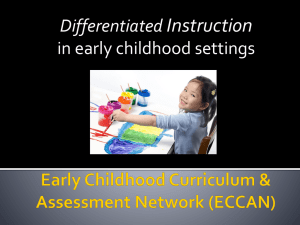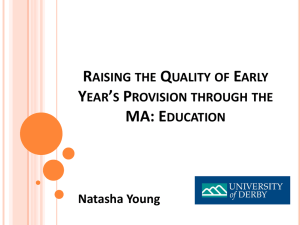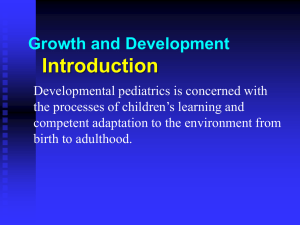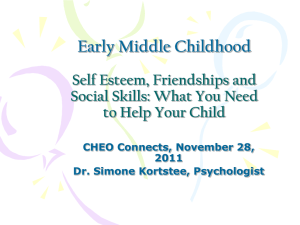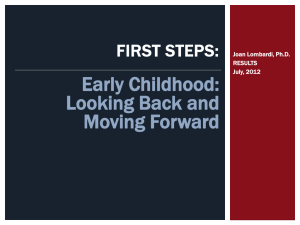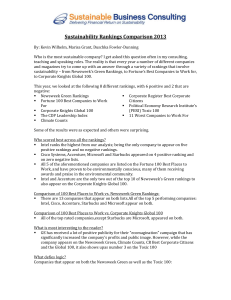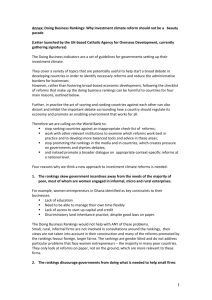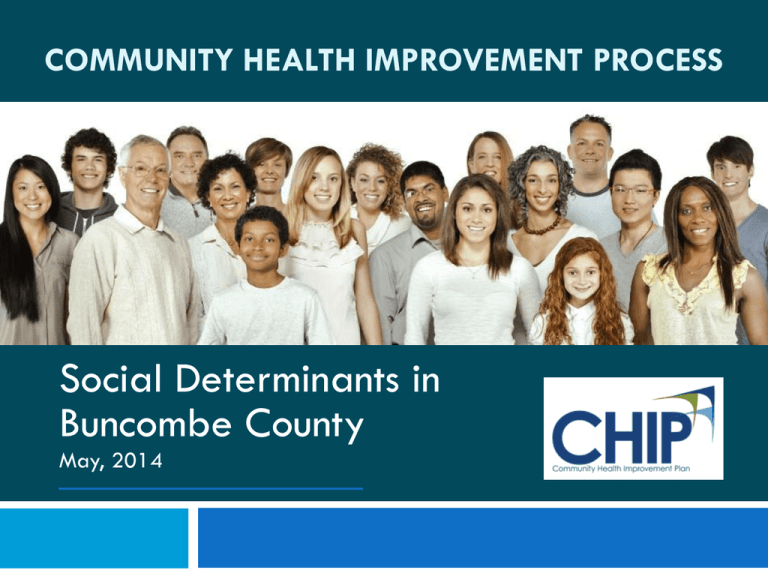
COMMUNITY HEALTH IMPROVEMENT PROCESS
Social Determinants in
Buncombe County
May, 2014
—————————————
County Health Rankings
Health Outcomes
Mortality (length of life): 50%
Morbidity (quality of life): 50%
Physical
Environment
tobacco use
10%
Built
environment
Air
quality
education
employment
Health Factors
Social &
Economical
Factors
40%
County Health Rankings model © 2010 UWPHI
30%
diet & exercise
unsafe sex
income
community
safety
Family &
social
support
Programs and
Policies
Health
Behaviors
alcohol use
Quality of care
Clinical Care
20%
Access to care
Scatter plot of Health Outcome vs Health
Factor by County Rankings
Strong Correlation
Coefficient of 0.829
Scatter plots created by
Ayotunde Ademoyero
Director, Epidemiology &
Health Surveillance Division
Forsyth County DPH
Scatter plot of Health Outcome vs Clinical Care
by County Rankings
Weak Correlation
Coefficient of 0.243
Scatter plot of Health Outcome vs Health
Behavior by County Rankings
Correlation
Coefficient of 0.633
Scatter plot of Health Outcome vs Social &
Economic Factors by County Rankings
Strong
Correlation
Coefficient
of 0.853
Act on what’s
important and
Evaluate
Compile
Health-related
Data – Needs
and Assets
Engaged
Partners &
Community
Collaborative
Action Planning
Analysis and
Interpretation
Prioritization of
Needs
Community Health Improvement Process
County Health Rankings 2014 Update
8
County Health Rankings Children in Poverty
2014
9
Air pollution - Particulate Matter 2014
10
Our Health Priorities
Healthy Living (Physical
Activity, Healthy Eating,
and Healthy Weight)
Tobacco Prevention and
Cessation
Selected as a result of the most
recent Community Health
Assessment
Preconception Health
See full CHA Report online:
www.buncombecounty.org/healthreports
Access to Care: ClinicalCommunity Connections
See full CHIP Plan online:
http://www.buncombecounty.org/governi
ng/depts/health/Chip.aspx
Early Childhood
Development
Source: Fay Hanleybrown, John Kania, and Mark Kramer, “Channeling Change: Making Collective Impact Work,” Stanford Social Innovation Review,
January 2012.
Public Health Advisory Council
The Council:
Provides
leadership, support, and coordination to assist
the workgroups established around each priority
Is responsible for being an advocate for systems, policy
and environmental change in the community
Submits recommendations to the Buncombe County
Health and Human Services Board
13
Early Childhood Key Talking Points
1. Children’s earliest experiences literally determine
how their brains are wired. Early experiences lay the
groundwork for the social and emotional skills needed
for future success in school and in the workforce.
14
Early Childhood Key Talking Points
2.Chronic stress from growing up in poverty or
experiencing violence hurts young brain development,
contributing to a lifelong disadvantage for at-risk kids
to overcome. In Buncombe County, nearly a quarter of
children are living in poverty.
15
Early Childhood Key Talking Points
3. Every dollar invested in early childhood education
produces a 10% annual return on investment. With
quality early childhood education, children will be
school ready; have higher graduation rates, better
lifelong health, and grow into productive citizens and
valuable employees. Over 1,000 children in Buncombe
County are stuck on a waiting list to receive
affordable, quality early childhood education.
16
Early Childhood Advocacy Commitments
17
Early Childhood Advocacy Commitments
18
19
20



